Gold ring with mark of Christ lost 500 years ago recently found in excellent condition
Carved with the figure of Christ, the ring dates to the beginning of the 15th Century. Based on its size, researchers said it's possible that a woman may have worn the ring. Other rings like it have been discovered in northern Finland, Östergötland and Uppland.
FILE – Archeologists find 7,000-year-old road under the sea
Archeologists say they have discovered the sunken Stone Age ruins of a 7,000-year-old road at the bottom of the Mediterranean Sea.
KALMAR, Sweden – The discovery of a remarkable artifact from centuries ago among tens of thousands of medieval objects found in Sweden has thrilled archaeologists.
Nearly 30,000 objects were discovered during the two-year excavation of medieval Kalmar, according to the Archaeologists, which is part of the government's National Historical Museums. Among the unique finds was a gold ring in almost new condition.
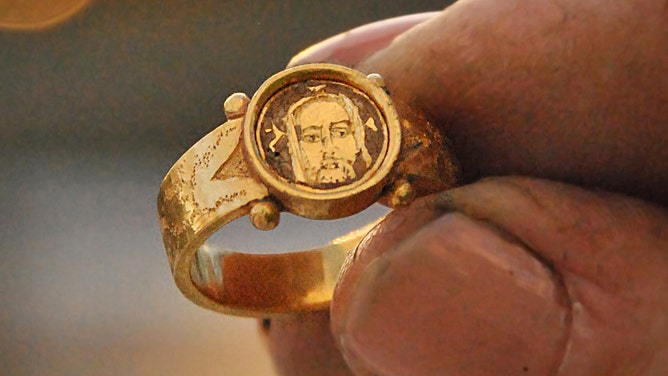
A gold ring was found during the excavations in Kalmar.
(Frida Albinsson, Archaeologists, SHM / FOX Weather)
Carved with the figure of Christ, the ring dates to the beginning of the 15th Century, according to the agency. Based on its size, researchers said it's possible that a woman may have worn the ring. Other rings like it have been discovered in northern Finland, Östergötland and Uppland.
"Probably someone was unlucky and lost the ring 500 years ago," said Magnus Stibéus, project manager at the Archaeologists.
FOSSIL OF ‘NIGHTMARISH’ SEA REPTILE FOUND IN MOROCCO
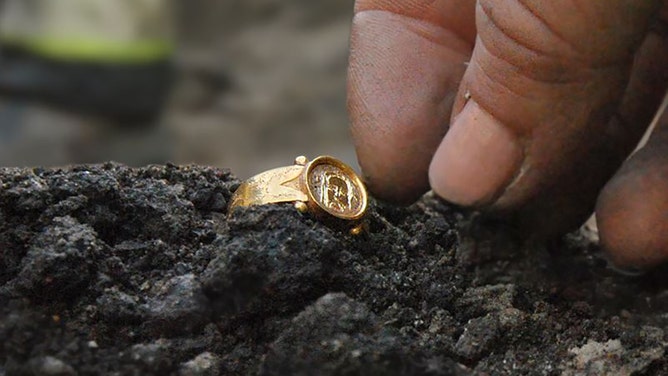
A gold ring was found during the excavations in Kalmar.
(Frida Albinsson, Archaeologists, National Historical Museums)
Archaeologists said they unearthed remnants of roughly 50 medieval plots, ten streets, and segments of the ancient city wall in Gamla Stan.
Remains of hundreds of buildings, cellars, streets, latrines and everyday objects from centuries ago, approximately 1250–1650, have now seen the light of day following the Kalmar War in 1611. Archaeologists said the findings were beyond all expectations.
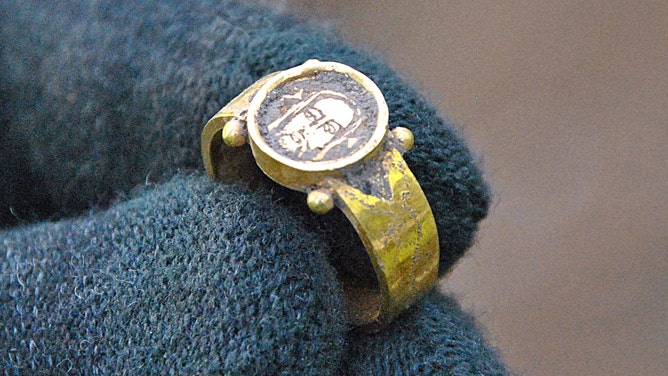
A gold ring was found during the excavations in Kalmar.
(Frida Albinsson, Archaeologists, SHM / FOX Weather)
"We have been able to lift the lid on the city's Middle Ages and have had the opportunity to study how people lived, what they ate and drank and how this changed over time," said Magnus Stibéus, project manager at the Archaeologists. "Archeology becomes like a peephole into medieval history that allows us to learn more about how life was several hundred years ago."
A unique glass alsengem, also known as a pilgrim's amulet, with three carved figures on it was also found. The object was broken and may have been discarded at the time, Stibéus said.
FOSSIL OF 240-MILLION-YEAR-OLD 'DRAGON' UNEARTHED IN CHINA
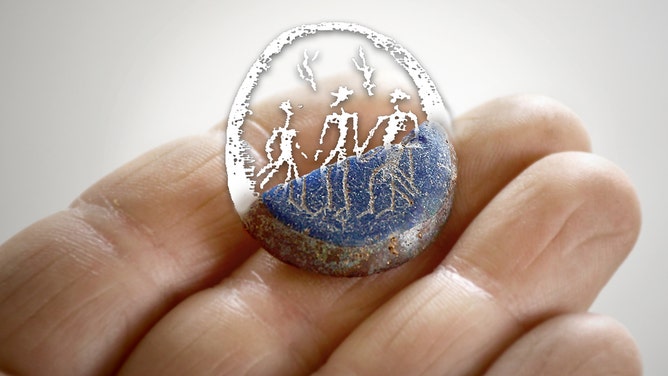
Piece of alsengem plus reconstruction of what alsengem might have looked like.
(Frida Albinsson, Archaeologists, National Historical Museums)
Long ago, people used to wear these small stones which were believed could protect travelers against misfortune.
The excavation also uncovered several fascinating discoveries, such as a rune stone that is believed to have originated from a burial mound located in a 12th-century cemetery, as well as a brick bearing the imprint of a cat's paw, archaeologists said.
ARCHAEOLOGISTS UNCOVER 7,000-YEAR-OLD ROAD UNDER MEDITERRANEAN SEA
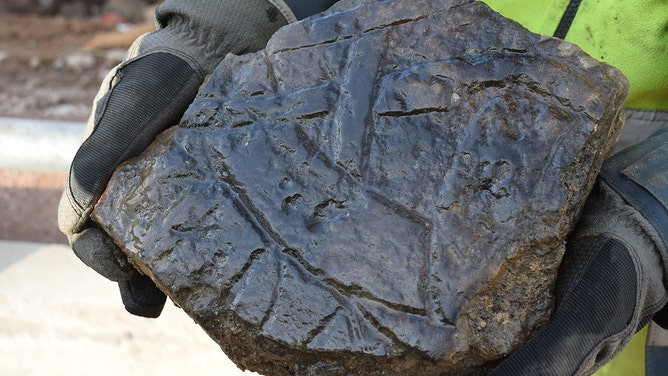
Limestone fragments with runes and relief-carved animal ornaments. The limestone was originally part of a grave monument and can be dated to the beginning of the 12th century.
( Magnus Stibéus, Archaeologists)
The numerous remnants provide evidence of wartime scenarios and the impact of the Kalmar War on the city.
"We have also found a large number of projectiles, such as cannon balls, musket balls and pistol bullets, but also swords," Stibéus noted.
Ongoing excavations continue in the area in hopes to uncover more historical artifacts and information, creating a valuable archive of the past.
